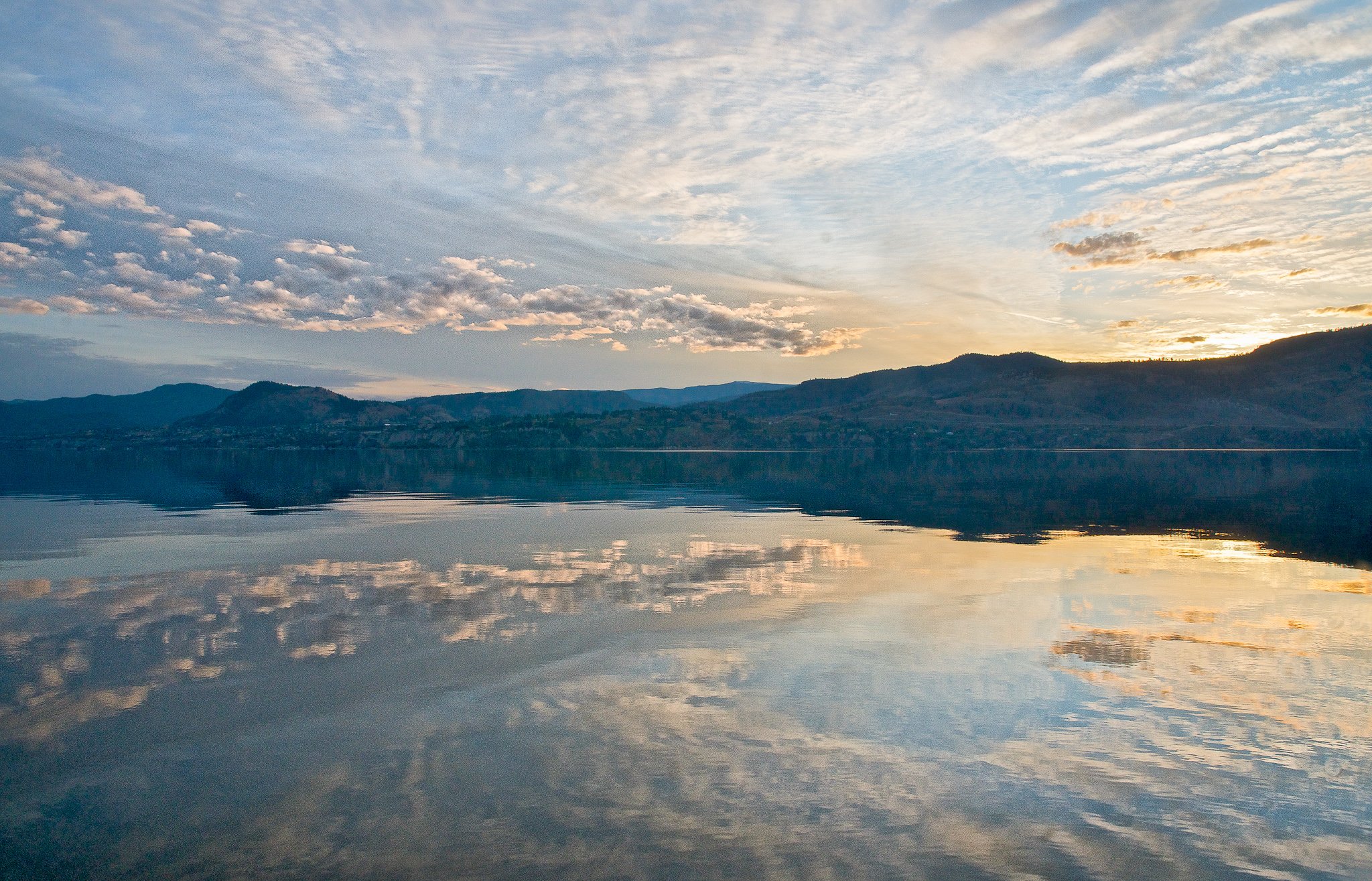
Applying nature based solutions.
Lower Chute Creek Restoration
The current focus of our efforts is the remediation and restoration of lower Chute Creek in the Okanagan valley of British Columbia on the traditional, unceded and ancestral territories of the Syilx First Nations people.
History:
In the early 1960’s, the natural flow of water from the apex of the alluvial fan of lower Chute Creek was constrained in a concrete flume in order to carry the water across the fan into the Okanagan Lake over the shortest possible distance. As a consequence, the fish spawning grounds and associated ecosystems were completely disrupted. In addition, on several occasions, the residents on the alluvial fan have been subject to flooding from the overtopping of the banks of the flume, most recently in 2017 and 2018. Furthermore, the concrete flume failed in 2018 as it is reaching the end of its functional lifespan and is in urgent need of replacement. Short term repairs, including filling holes with concrete and bolstering the terminus of the concrete flume which had failed, were carried out in 2018 and 2019.
Chute Creek during low summer water-flow in 2022 just upstream of the concrete flume and the Indian Rock Road bridge.
Lower Chute Creek concrete flume during recent short-term concrete repairs showing damage from deterioration.
Lower Chute Creek concrete flume during low summer water-flow in 2022.
Plan:
The Society is committed to ensuring that the required remediation of lower Chute Creek is accomplished in a way that not only addresses the flood risk to the community, but also restores the in-stream and riparian ecosystems employing progressive nature-based-solutions that welcome and encourage the return of healthy, resilient, wild salmon populations. Complimentary objectives are to conserve and enhance biodiversity, contribute to improved water quality, and to inspire and support community stewardship through public engagement and education. The Society is taking the lead in developing the necessary partnerships with supportive organizations and individuals in order to ensure that the required expertise and resources are available to fully realize this vision.
Project Phases:
Phase I ~ Feasibility Study & Conceptual Design: (COMPLETED)
Mould Engineering Inspection and Remediation Report.
Written agreement between the owners of the 5 private lots adjacent to the creek to contribute land and support the restoration of Lower Chute Creek as per Mould Engineering’s Concept.
Creation of the Chute Creek Stewardship Society (registered charity) to support the restoration and assist with fund/friend raising.
Initial project review meetings including with the local community property owners of Indian Rock, the Regional District of Okanagan-Similkameen Area E Director Adrienne Fedrigo, the local MLA Dan Ashton, the local MP Richard Cannings, and the Penticton Indian Band Director of Natural Resources James Pepper.
Phase II ~ Final Design Development and Permit Application Submission: (CURRENT)Detailed site survey provided by the Ministry of Transportation and Infrastructure (MOTI). (Completed)
Hydrotechnical engineering assessment of the Indian Rock Bridge over Chute Creek arranged by the MOTI. (Completed)
Cultural Heritage Resource Assessment and Mapping arranged and provided by the Penticton Indian Band. (Completed)
Okanagan Nation Alliance Fisheries recommendations regarding Restoration Goals and Design Rationale for the Indian Rock Road right-of-way submitted to and supported by the Penticton Indian Band. (Completed)
Geotechnical sub-surface drilling & data analysis for bridge foundation and MOTI right-of-way. (In Process)
Development of an integrated design solution with MOTI’s Project Team, with further input from the Okanagan Nation Alliance Fisheries and the Penticton Indian Band, for the remediation of the Indian Rock Road Bridge, and the creek on the public Ministry of Transportation right-of-way, and downstream to the Okanagan Lake. (In Process)
Completion of 100% design documents and submission of an application to the Provincial Ministry (under Section 11 of the Water Sustainability Act) and the Federal Department of Fisheries and Oceans for the required permits to proceed with restoration. (Pending)
Phase III ~ Construction: (PENDING)
Project manager, Mould Engineering, to prepare contract documents, tender & administer construction contracts.
Environmental and First Nations archaeological inspections & monitoring to be performed.
Indigenous riparian replanting with the involvement of the Penticton Indian Band. .
Construction of interpretive viewing platform with signage (in English & nsyilxcən languages) with the involvement of the Penticton Indian Band.
Phase IV ~ Stewardship: (PENDING)
A historical record of this project to be displayed and archived at the Naramata Museum (www.naramatamuseum.ca).
Develop and implement a program plan for salmonid-fry release, with complimentary organizations such as a local School Board.
Ongoing monitoring of creek functioning, both in terms of hydraulics and ecosystem/habitat health, with remediation as required.
Watch this space for more information and updates as our project unfolds.
(Last update: April 22nd, 2024)
Lower Chute Creek Location
Lower Chute Creek flows approximately 500 feet from the apex of the alluvial fan of lower Chute Creek into the Okanagan Lake in British Columbia on the traditional, unceded and ancestral territories of the Syilx First Nations people. The site is located about 20 kilometres north of Penticton. The total watershed area of Chute Creek is approximately 82 square kilometres with a predominantly west facing aspect. Elevations range from 343 metres (at the Okanagan Lake level) upwards to 2000 metres east of Chute Lake and the Big Meadow Reservoir.
(Click on the red flag to visit the location)
Restoration Design Concept
The following design concept was chosen after the evaluation of several proposals developed by Mould Engineering. This concept provides for more than a 1-in-200 year flow capacity while also creating the maximum potential area for salmon spawning of all the concepts considered. The final design will be determined through a process of collaboration with and input from imaginative experts in the field.

“If there is magic on this planet,
it is contained in water.”
— Loren Eiseley


